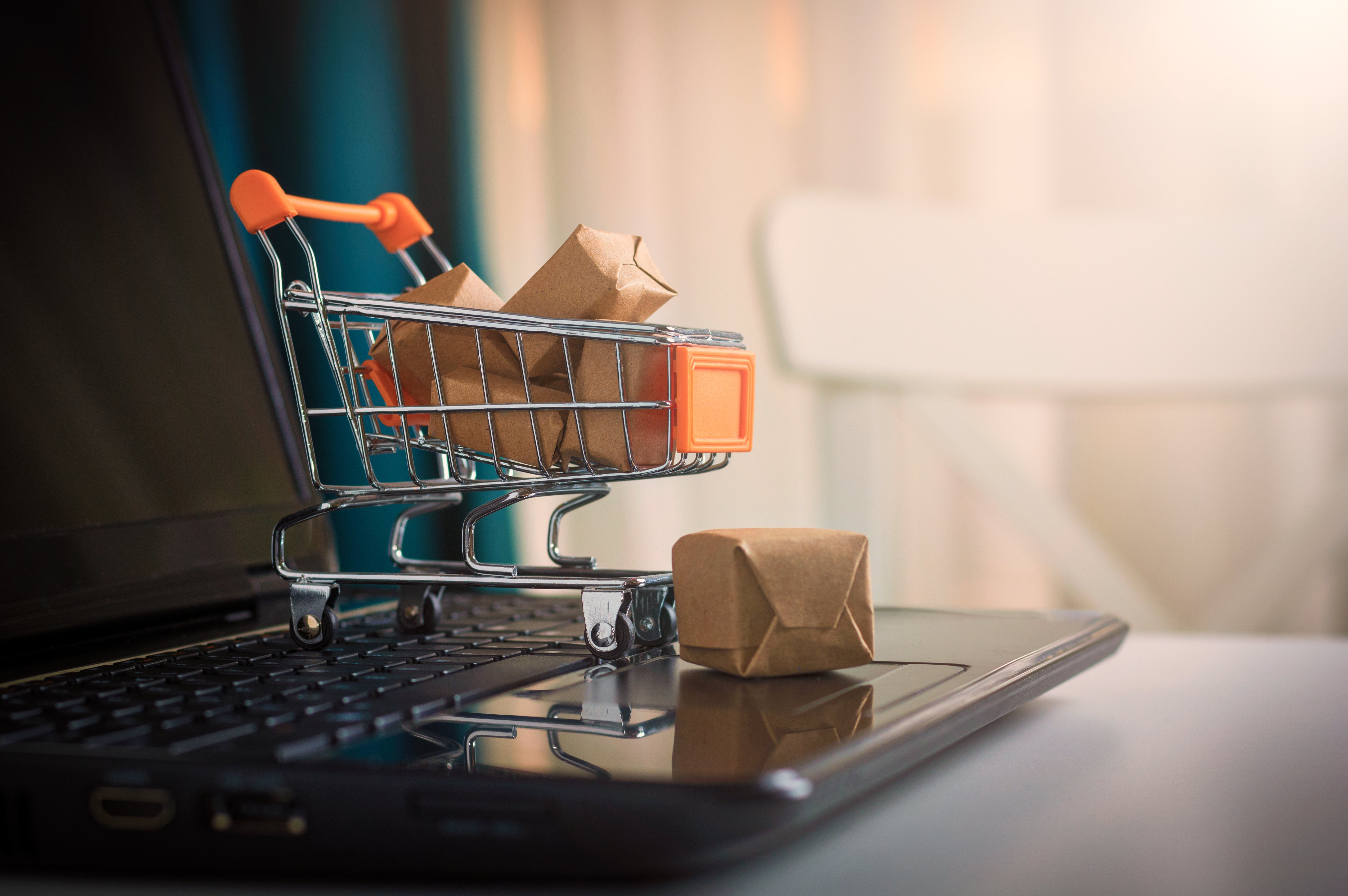Over 3000 people attended Shoptalk Europe – the world’s largest retail conference – in London. Industry professionals shared insights on areas such as retail’s transformation, ground-breaking marketing strategies and tactics, growth strategies for the next normal, meeting changing customer demands and using data.
Here’s nine things we learned:
- Shoppers want e-commerce to be more experiential
- Social commerce and live shopping is redefining the future of retail
- Marketplaces dominate the e-commerce market
- The metaverse presents opportunities
- Omnichannel - a customer 360 view is crucial
- Composable commerce
- Innovative payment methods
- Sustainability is high on the global agenda
- Changing business models
1. Shoppers want e-commerce to be more experiential
 Consumers today expect retailers to tailor their online shopping experiences to their preferences and buying habits, which is why retailers need to undertake the latest personalisation tactics to create more relevant and engaging shopping experiences.
Consumers today expect retailers to tailor their online shopping experiences to their preferences and buying habits, which is why retailers need to undertake the latest personalisation tactics to create more relevant and engaging shopping experiences.
Attention spans are also decreasing, with people rethinking their relationship with time. Personalisation, therefore, is the driver to solve the customers time issue.
Alex Williams, Head of Growth & Personalisation at M&S, told attendees at Shoptalk Europe they currently have five billion digital customer interactions every year across all of their channels.
To manage it, M&S have created a data fly wheel that incorporates all of its customer preferences, with over 100 use cases personalised today. Each touchpoint has its own rules and data model. According to Williams, M&S biggest challenge is handling its orchestration layer – in other words, deciding the most effective campaigns and messaging to target its customers with.
2. Social commerce and live shopping is redefining the future of retail
Social commerce can help remove friction from online shopping experiences that start on social platforms. Patrick Nommensen, Head of E-Commerce Operations at TikTok, dived deeper into this topic by talking about how social commerce has become a revenue stream TikTok.
Nommensen’s view was that social has changed with social commerce. Usually, social is used for branding and top funnel e-commerce activities, but social commerce (community commerce) is becoming a player in the lower e-commerce funnel, which means it’s not only a marketing opportunity.
Nommensen also believes live shopping is redefining the future for retail. And in order to succeed in the era of social commerce, brands should consider four key components:
- Mobile – the channel of choice for digital savvy consumers
- Creators – talk directly to audiences with authenticity and trust
- Live – personalised engagement and accelerated conversion
- Community – far more engaged by ”conversional commerce”
Research from Mediatel suggests the opportunities will grow bigger and bolder, predicting that social commerce will be worth $7.3billion in 2023, and approximately half of that will originate from live shopping.
3. Marketplaces dominate the e-commerce market
 Today, marketplace giants control over half of the e-commerce market, which, according to Huge, is approximately a revenue of $3 trillion of the total $5 trillion of the global e-commerce market.
Today, marketplace giants control over half of the e-commerce market, which, according to Huge, is approximately a revenue of $3 trillion of the total $5 trillion of the global e-commerce market.
Marketplaces are expanding into full service logistics companies where they care less about selling on the platform, which is moving them away from a pure marketplace model. It makes sense because the marketplace giants typically have the most sophisticated supply chains in their respective regions.
Roland Palmer, General Manager for UK, Netherlands and Nordics at Alibaba, told Shoptalk Europe about marketplaces being key to several companies and an interesting way to try new markets. This was backed up by Ville Kangasmuukko Nordström, CEO at Bubbleroom, who said they use their marketplace strategy as a way to try new markets and evaluate assortment and prices.
4. The metaverse presents opportunities
Metaverse represents an online space where people, places and things are represented digitally. There’s an expectation the future metaverse, virtual reality, augmented reality and video will create an experience mirroring our real world—and even replace some real-world activities.
Metaverse presents both a marketing and commerce opportunity. From a marketing perspective, metaverse can be used for live events, gaming and personalised ads. From a commerce perspective, you can create virtual storefronts, sell virtual and physical products and incorporate direct to avatar (D2A). D2A refers to an emerging business model where brands and creators can sell their products directly to a person’s virtual avatar.
But before retailers can adopt metaverse, there are key questions that need to be answered:
- Which platform(s) are we going to use?
- Who owns the strategy? As it involves marketing, digital and merchandising, is it the board or CEO?
- Are we going to build, buy or partner? Or a combination of all of them?
Elodie Perthuisot, Chief of E-Commerce at Carrefour Group, was asked how she managed to get buy-in from her organisation to invest in metaverse: “I didn’t ask the organisation,” revealed Perthuisot. “I made a decision and I have to reflect on that decision later on. Sometimes, you have to make quick decisions if you want to act with speed and create innovation.”
5. Omnichannel - a customer 360 view is crucial
To succeed with an omnichannel strategy, you need a unified view of all your online and offline customer information.
That’s why retailers and brands are investing in customer data platforms that can centralise data, providing you with one location to find everything you need to know about each customer and connect with them in the most personalised way possible, in all channels.
However, a good plan by itself isn’t enough – you need to determine whether it’s having a positive impact on your business. Read more about how you can measure the success of your omnichannel customer experience strategy by clicking here.
6. Composable commerce
 There were plenty of composable and MACH-oriented companies in the exhibition hall (MACH stands for Microservices, API-first, Cloud-based, Headless). In the session ”Succeeding with Grocery Ecommerce Partners and Technologies”, Balakrishnan Subramanian, VP Digital Demand at Mars, spoke about the D2C initiatives Mars are doing.
There were plenty of composable and MACH-oriented companies in the exhibition hall (MACH stands for Microservices, API-first, Cloud-based, Headless). In the session ”Succeeding with Grocery Ecommerce Partners and Technologies”, Balakrishnan Subramanian, VP Digital Demand at Mars, spoke about the D2C initiatives Mars are doing.
Subramanian said the initial choices for Mars was either to:
- Go with a solution where Mars built a solution for each brand
- Build an ecosystem for the brands
The first option meant Mars would have to build a specific solution for each brand/channel and these would be working in silos. This is the traditional approach (with lower risk) but usually means duplicated work.
Ultimately, Mars went for the second option – a composable approach. The feeling was that composable was tougher to execute, but it was the right strategic move for Mars. Composable for Mars means business capabilities can easily be changed, replaced or removed if the business needs changes.
7. Innovative payment methods
Krystina Gustafson and Joe Laszlo from Shoptalk picked out payment as one of the trends ‘changing the game’. Payment innovation is attracting attention from regulators, retailers and shoppers. In fact, research from CB Insights found there was record funding to payments tech start-ups in 2021, with $31.9 billion collected as of December 14, 2021.
Payment innovation spans over both online and offline, with the aim of creating frictionless and more flexible solutions in areas such as:
- Fast check-out
- Self check-out
- Smart cards
- Scan and go
- Check-out free
- Payment engagement
- BNPL (buy now, pay later)
- Crypto
- POS (point of sale)
- Mobile wallets
There’s also a need to streamline the checkout process, with offering as many payment options as possible helping to reduce cart abandonment.
8. Sustainability is high on the global agenda
 With sustainability top of mind, businesses need to show (more than ever) their commitment to tackling climate change. According to McKinsey, 37% of European consumers say sustainability is (highly) important.
With sustainability top of mind, businesses need to show (more than ever) their commitment to tackling climate change. According to McKinsey, 37% of European consumers say sustainability is (highly) important.
McKinsey also noted a difference in consumer behaviour for those who are looking to shop more sustainably. To reach these customers, businesses need to tailor their approaches accordingly.
Some ways you can do this include:
- Incorporate sustainability into your strategy, with clear sustainable targets that are measurable
- Create a wide range of sustainable alternatives on your product shelves
- Strengthen your sustainability transparency and communication on a product and corporate level
9. Changing business models
Re-commerce is a growing trend
As consumers become more conscious over sustainability practices, re-commerce is growing as a trend. Gen-Z and millennials view re-commerce as a way to profit and save on old items. In fact, the expectations is that re-commerce will grow by 175% by 2025.
Benefits of re-commerce include:
- Reduces the demand for new garments, which in turn reduces the demand for raw materials and lowers energy usage in factories
- Helps consumers save money as second hand items come at discount prices
- Encourages consumers to recycle and reuse items they no longer need but are still good quality
Ahold Delhaize – building customer ecosystems
Frans Muller, CEO at Ahold Delhaize, explained how Ahold is building customer ecosystems and driving richer customer experiences and touch points. They build ecosystems by connecting shopping experiences across its food and non-food brands, helping Ahold deliver increased convenience, value and relevance to its customers.
How to maximise your technology investment
More and more businesses are realising the benefits digital technology can bring to their organisations. But if your tech is going to be worthwhile, you need to focus on user adoption. In our short guide to technology adoption, you’ll discover what to prioritise, when and why.
This includes:
- Aligning your choice of technology with your strategy
- Conducting a systems and needs analysis
- Identifying your key stakeholders and educating them
- And more!
Download it today but clicking on the button below.

